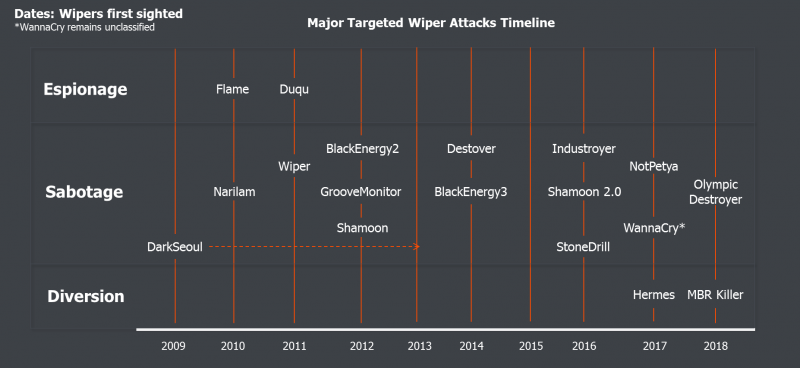Early computer viruses were often destructive in nature, but once criminals learned about the money they could make from malware, they realised that destructiveness hurt their goals. Destructive malware, however, has made a comeback in recent years, most importantly in nation-sponsored attacks.
Some of these malware variants literally wipe all data off disks (hence the name ‘wiper’), while others merely encrypt the data in a way that doesn’t allow for recovery, often masquerading as ransomware: the notorious 2017 attacks of WannaCry and NotPetya are examples of the latter.
In a
paper
presented at
VB2018
in Montreal last month,
BAE Systems
researcher Saher Naumaan looked at the various kinds of malware that contain a wiper variant, including their goals, propagation methods, and how the wiper functionality worked.

Major targeted attacks employing wipers and classifications.
We have now published Saher’s paper in both
HTML
and
PDF
format. We have also uploaded the video of her presentation to our
YouTube
channel.
Leave a Reply